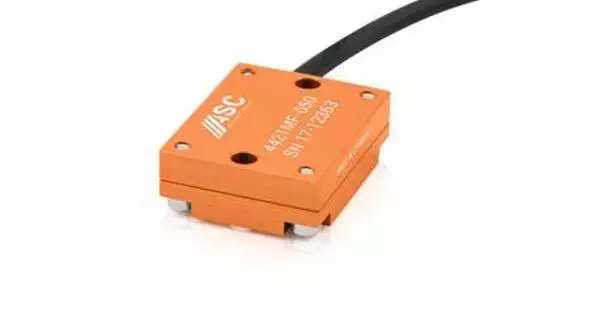An accelerometer is a device used to determine appropriate acceleration. It is a gadget that measures an object’s acceleration or changes in velocity. Proper acceleration is the rate of change of velocity of a body in its own instantaneous rest frame, as opposed to coordinate acceleration, which is acceleration in a fixed coordinate system. It is commonly used in a variety of applications including as consumer electronics, automotive systems, aerospace, and industrial machinery.
For example, an accelerometer at rest on the surface of the Earth will measure an acceleration due to Earth’s gravity, straight upwards (by definition) of g ≈ 9.81 m/s2. By contrast, accelerometers in free fall (falling toward the center of the Earth at a rate of about 9.81 m/s2) will measure zero.
Accelerometers have numerous applications in industry and science. Inertial navigation systems for aircraft and missiles use highly sensitive accelerometers. Accelerometers measure vibration in rotating equipment. They are used in tablet computers and digital cameras to keep images on screens upright. Accelerometers aid in the stabilization of flight in unmanned aerial vehicles.
Principle of Operation
Accelerometers operate on Newtonian physics principles, specifically Newton’s second rule of motion, which states that the force applied to an object is proportional to its mass and the rate of change of its velocity (acceleration).
Accelerometers detect forces acting on a small mass within the gadget to determine acceleration. When the device accelerates, the mass is subjected to a force that causes it to move, and this movement is tracked using various detecting methods.
Types of Accelerometers:
- Piezoelectric Accelerometers: These use piezoelectric crystals that generate an electric charge when subjected to mechanical stress. The generated charge is proportional to the applied acceleration.
- Capacitive Accelerometers: These rely on changes in capacitance between plates as the distance between them changes due to acceleration.
- MEMS (Microelectromechanical Systems) Accelerometers: These are miniaturized accelerometers manufactured using microfabrication techniques. MEMS accelerometers are commonly used in smartphones, tablets, and other portable devices.
Applications
- In consumer electronics, accelerometers are used for screen orientation (e.g., auto-rotate), gaming (e.g., motion sensing in game controllers), and step counting in fitness trackers.
- In automotive systems, they are crucial for airbag deployment, vehicle stability control, and navigation.
- In aerospace, accelerometers are used in aircraft and spacecraft for navigation, control, and research purposes.
- In industrial machinery, they are used for monitoring and safety applications, such as detecting vibrations in rotating machinery.
Units of Measurement
Acceleration is typically measured in units of meters per second squared (m/s²) or gravitational units (g), where 1 g is approximately equal to the acceleration due to gravity on Earth’s surface (about 9.81 m/s²).
Single, Dual, and Triple-Axis Accelerometers: Accelerometers can measure acceleration along one, two, or three orthogonal axes (X, Y, Z), depending on their design and application requirements.
Accelerometers play a crucial role in modern technology, enabling various features and functions in devices that rely on motion detection and measurement.
















